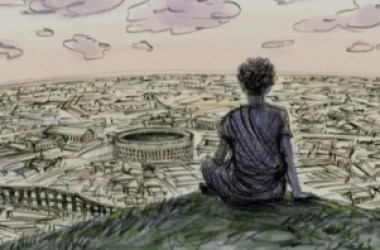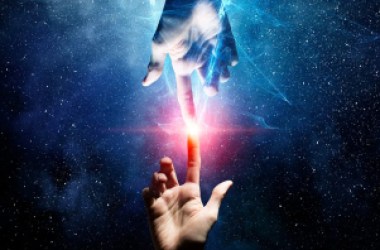The ancients, weaving their way between the vibrant life of Gnosticism and the pragmatic concerns of everyday existence, didn’t always shy away from the potent idea that the vessel we inhabit is far more than just meat in motion. Pluck this metaphor out of its dusty text, and it still holds powerful resonance today.
Let’s think about this. Ego loves stories; craving certainty, avoiding discomfort (Kata Leukaston?) that term rings true. When we talk about our bodies, Ego immediately starts its internal monologue: “The body feels weak; it’s a sign of failing.” Or perhaps, “My stomach hurts because I chose poorly today (because my ego craves perfection).” It makes the narrative, seeking validation or escape.
But stepping back (prohairesis) allows us a crucial reframing. This isn’t just about dissecting mental ploys (imagination). We need to examine the physical self itself, guided by that same ancient impulse: Is this sacred vessel (Logos?) a constant source of pain and limitation (iron determination) that demands we take control, or does it offer a different kind of truth? The “Body as Temple” isn’t just metaphor; it suggests our physical form is a primary interface, the very ground where Ego’s dramas play out.
The Body as Your Truest Story (Pro artem?)
Your body isn’t just a backdrop; it’s the canvas where your life’s real narrative unfolds. Drawing from ancient wisdom like pro artem, which echoes the idea of living artfully in harmony with nature, we can see the body as the most honest storyteller we have. It doesn’t lie or embellish; it simply is. But our ego? That’s where the plot twists come in.
Ego Craves Perceived Protection (Kata Leukaston?)
We all know that nagging voice inside (the ego ); that’s always on high alert, scanning for threats. In Stoic terms, something like kata leukaston (which might nod to avoiding what’s harmful or seeking false certainties) captures this perfectly. The ego treats the body like a fortress it must defend at all costs. Feel a twinge in your back after a long day? Ego jumps in: “This is a disaster! You’re breaking down!” It’s not about the sensation itself; it’s about wrapping it in a story of vulnerability that demands immediate protection.
Think about how this plays out in real life. Maybe you’re training for a marathon or just your regular weekend hike, and your legs start burning. Instead of acknowledging it as a natural response to effort, ego spins it into “I’m not strong enough ; better quit before I get hurt.” This craving for safety isn’t just mental; it manifests physically, tensing muscles or shallowing breath, turning a simple signal into a full-blown crisis. The ancients warned against this overreach, reminding us that true protection comes from understanding, not avoidance.
Discomfort is Misinterpreted (Kardia?) by Ego
Discomfort hits, and suddenly everything feels personal. Drawing from kardia, the heart or core of our being, we see how ego twists these signals into emotional indictments. A headache isn’t just dehydration or stress; it’s proof you’re overwhelmed, unworthy, or doomed to suffer. Ego loves to misread the body’s language because it thrives on drama, turning neutral sensations into stories of betrayal.
I’ve noticed this in my own life: a knot in the stomach before a big meeting becomes “I’m not cut out for this,” courtesy of ego’s interpretive dance. But strip away the narrative, and what’s left? Just a physical cue, maybe signaling the need for a deep breath or a glass of water. The body, in its temple-like purity, doesn’t judge.. it’s the ego that slaps on the labels, confusing raw feeling with failure. Learning to separate the two is like cleaning a stained-glass window; suddenly, the light shines through clearer.
The Body Hides or Exposes Meaning (Elpidē?)
At its core, the body can either conceal deeper truths or lay them bare, much like elpidē suggests a hopeful unveiling. Ego might hide meaning behind layers of fear, but when we pay attention, the body exposes what’s really going on ; our hopes, fears, and untapped potential. It’s not about ignoring pain; it’s about seeing it as a revealer, not a roadblock.
For instance, chronic fatigue might hide unresolved emotional baggage, but once exposed, it points toward needed changes; like better boundaries or rest. The body as temple invites us to treat these exposures with reverence, turning potential despair into hopeful growth. Ego wants to bury the meaning to stay in control, but embracing it? That’s where real transformation begins, fostering a sense of elpidē that lights the path forward.
Observe? Then it’s an Illusion
What if much of what we “observe” in our bodies is just smoke and mirrors? Entuphia, hinting at inner illusions or self-deceptions, challenges us to question our perceptions. The body feels real and immediate, but ego’s lens often distorts it into something illusory, making us chase shadows instead of substance.
How Ego Takes Control of Perception (imagination)
Ego hijacks our imagination like a sneaky director, scripting scenes that aren’t there. In philosophical terms, imagination isn’t just daydreaming; it’s how we color reality. Feel a flutter in your chest? Ego imagines catastrophe: “Heart attack incoming!” Before you know it, you’re spiraling, even if it’s just caffeine jitters.
This control starts small but builds. Daily aches become symbols of aging or inadequacy, all ego-fueled fantasies. The ancients, through practices like mindfulness, urged us to reclaim perception. By observing without judgment, we see imagination for what it is; a tool, not a tyrant. It’s liberating to realize that half our bodily “problems” dissolve when we stop letting ego direct the show.
Testing the Waters: “Is my body failing me?” (Logos?)
We all ask it: “Is my body failing me?” But logos, the rational principle governing the Universe, invites a deeper test. Instead of panicking, we probe logically ; is this failure, or feedback? A sore knee after hiking isn’t betrayal; it’s logos speaking through the body, saying “adapt your stride” or “build strength.”
Testing means experimenting gently: try rest, movement, or nutrition, and observe without ego’s bias. Often, what feels like failure is just the body’s wise communication. Embracing logos turns doubt into dialogue, revealing the illusion of betrayal and fostering trust in our physical temple.
The Futility of Ego’s Body Narratives (Kata Leukaston?)
Ego’s stories about the body? Ultimately futile, as kata leukaston reminds us of chasing false securities. Narratives like “I must be flawless” or “Pain means weakness” lead nowhere, exhausting us without resolution. They’re loops of illusion, keeping us stuck.
Recognizing this futility is freeing. When ego narrates, pause and ask: Does this story serve? Usually, no; it’s just noise. Shedding these tales lets the body speak plainly, turning futile struggles into meaningful presence. The temple stands strong without ego’s embellishments.
Stepping Back (prohairesis) reveals the Body’s Role in Inner Presence
Prohairesis, our power of choice, is the key to stepping back and seeing the body’s true role. It’s not about detachment for detachment’s sake, but choosing presence over reaction, uncovering the inner sanctuary where body and mind align.
Seeing Through Discomfort (Negative Visualization applied)
Discomfort clouds everything, but applying negative visualization; imagining worse scenarios.. helps us see through it. Picture the ache as temporary, or worse pains you’ve endured; suddenly, it’s manageable. This Stoic tool strips ego’s power, revealing discomfort as a teacher, not tormentor.
In practice, a migraine becomes a prompt for gratitude: “This hurts, but it’s not endless.” Seeing through shifts focus from suffering to resilience, enhancing inner presence. The body, viewed this way, becomes a ally in cultivating calm.
“It’s my body, but not to ego-craving effect.”
Here’s the crux: “It’s my body, but not to ego-craving effect.” Ownership without obsession. Ego craves control; perfect health, endless energy.. but that’s illusion. Accept it as yours, yet transient, and freedom follows.
This mindset turns daily care into mindful acts, not ego-driven quests. Eat well because it honors the temple, not to chase ideals. Releasing cravings reveals the body’s role in grounding us, fostering presence without possession.
What does this “sacred vessel” really mean for our daily lives? (Pro artem?)
So, what does “sacred vessel” mean day-to-day? Echoing pro artem’s artful living, it means treating the body with reverence in routines; movement as meditation, rest as renewal. It’s integrating philosophy into the mundane, where the temple hosts your life’s sacred moments.
Practically, it shifts habits: listen to hunger without judgment, move with intention. This elevates daily life, making the body a partner in presence, not a battleground. Embracing it transforms ordinary days into profound ones.
Exercise: The Body as a Process Requires Detachment (prophasis apaisōn?)
Viewing the body as a process, not a fixed thing, demands detachment; prophasis apaisōn captures this release from excuses or attachments. It’s about flowing with sensations, not clinging.
Activity: Throughout the day, consciously notice physical sensations (entuphia?). Discomforts of various kinds.
Start simple: tune into your body hourly. Feel the weight in your feet, the rise of your breath, or that subtle tension in your shoulders. Notice without labeling.. entuphia here means acknowledging illusions that arise.
Practice: When one arises, gently ask: “Is this sensation (like hunger) being driven by Ego’s perception (imagination?) seeking certainty or control? Or is it simply a thing being felt (Logos?), devoid of inherent emotional charge?”
Probe kindly: Is ego amplifying this twinge into a story? Or is it just.. there? This question grounds you in logos, dissolving charges.
In wrapping up, give this a try and see how it shifts your day. I’d love to hear your experiences; share in the comments below…









